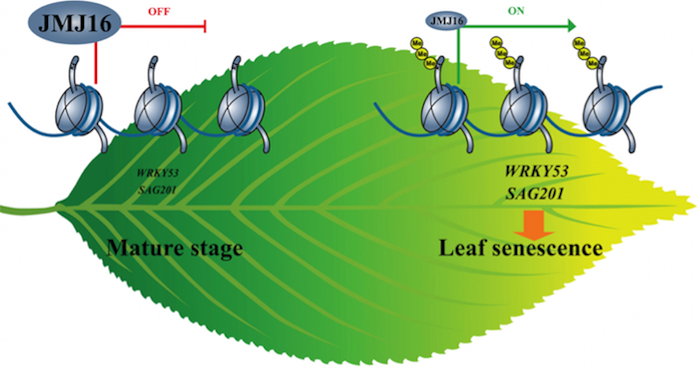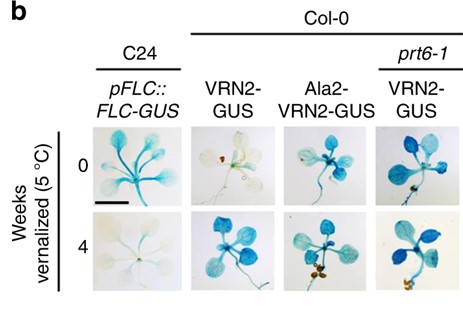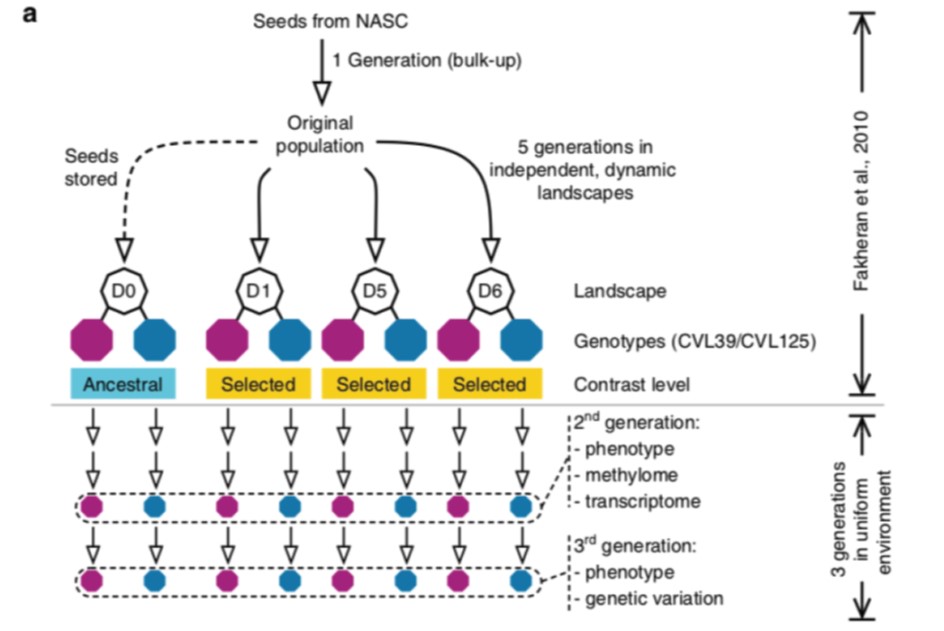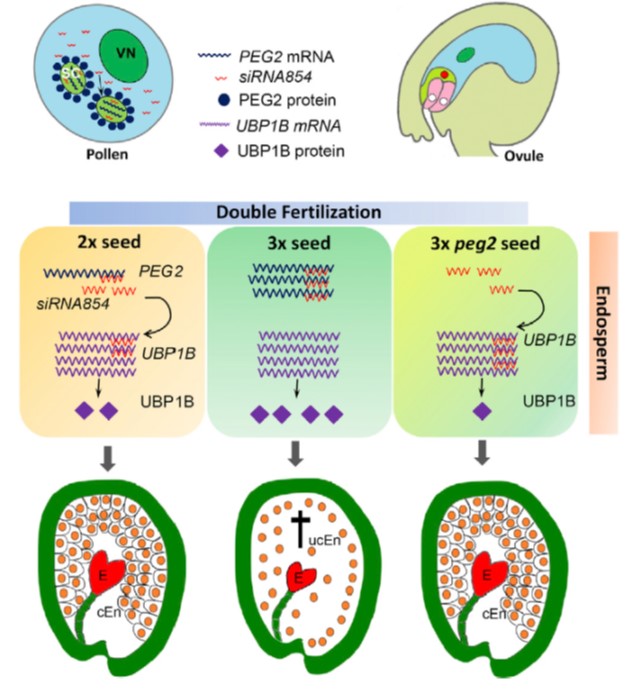
Arabidopsis endosperm response to paternal genome dosage is regulated by small RNA pathway (Plant Cell)
Plant Science Research WeeklyThe endosperm, a tissue that transfers nutrients from maternal tissue to the embryo, is normally triploid, with two copies of the maternal genome and one of the paternal genome. Excess paternal genomes usually leads to endosperm abnormalities and seed abortion. Previous studies have shown that the RNA…

Small RNA Pathway Acting in the Father Controls Seed Abortion
Research, The Plant Cell, The Plant Cell: In a NutshellSatyaki and Mary Gehring uncover the mechanism underlying interploidy seed abortion, challenging previous models of dosage sensitivity in endosperm. Plant Cell https://doi.org/10.1105/tpc.19.00047
By PRV Satyaki (Whitehead Institute for Biomedical Research) and Mary Gehring (Whitehead Institute for…

The RNA export factor ALY1 enables genome-wide RNA-directed DNA methylation (Plant Cell)
Plant Science Research WeeklyThe epigenetic control of gene expression is crucial for genomic stability and allows the defence against invading DNA that for instance could be derived from viruses or transposable elements. In this context, the RNA-directed DNA methylation (RdDM) plays an essential role in silencing of genes via epigenetically…

The Epigenetics of Leaf Senescence
Research, The Plant Cell, The Plant Cell: In a NutshellLiu et al. explore the mechanism underlying the epigenetic reprograming of senescence-associated gene expression during leaf senescence. Plant Cell https://doi.org/10.1105/tpc.18.00693
By Peng Liu, Jing Bo Jin, and Xiaofeng Cao, Chinese Academy of Sciences, Beijing, China.
Background: Leaf…

Plant PRC2 subunit VRN2 stability regulation through oxygen dependent proteolysis
Plant Science Research WeeklyPolycomb repressive complex 2 (PRC2) represses the expression of its gene targets epigenetically and VERNALIZATION 2 (VRN2) is a subunit of the PRC2 complex in Arabidopsis. The PRC2-VRN2 complex, among other roles, regulates flowering after long cold exposure. Gibbs and coworkers identified VRN2 as a…

Worming into the Plant Chromatin: A Nematode Effector Influences Host Histone Acetylation
Blog, The Plant CellPlants encounter myriad invaders, including bacteria, fungi, insects, and other parasites. These pathogens generally deliver effector proteins into plants, increasing their virulence and targeting various host processes (Toruño et al., 2016). Although advances in the past two decades have led to significant…

Major domestication-related phenotypes in indica rice are due to loss of miRNA-mediated laccase silencing (Plant Cell)
Plant Science Research WeeklyRice (Oryza sativa) is derived from breeding of perennial wild ancestors with long stalks and few seeds to short plants with enlarged panicles (inflorescences). Many known domestication changes are due to changes in transcription factors or modulation of enzymatic actions. Recent work by Swetha et al.…

Contribution of epigenetic variation to adaptation in Arabidopsis (Nature Comms)
Plant Science Research WeeklyIt is known that changes in the epigenetic state can be inherited, but whether the epigenetic changes are subject to natural selection is uncharted territory. Schmid et al. examined the phenomic and epigenomic changes in Arabidopsis accessions that underwent selection to simulated habitat fragmentation.…

The imprinted gene PEG2 acts as a sponge for the transposon-derived siRNA854, inducing postzygotic reproductive isolation (Devel. Cell)
Plant Science Research WeeklyClosely related species that have different numbers of chromosomes (e.g., 2n versus 4n) are reproductively isolated, and this can arise as a consequence of an unbalancing in the expression levels of maternally- and paternally-imprinted genes. Wang et al. have identified a fascinating mechanism that explains…

